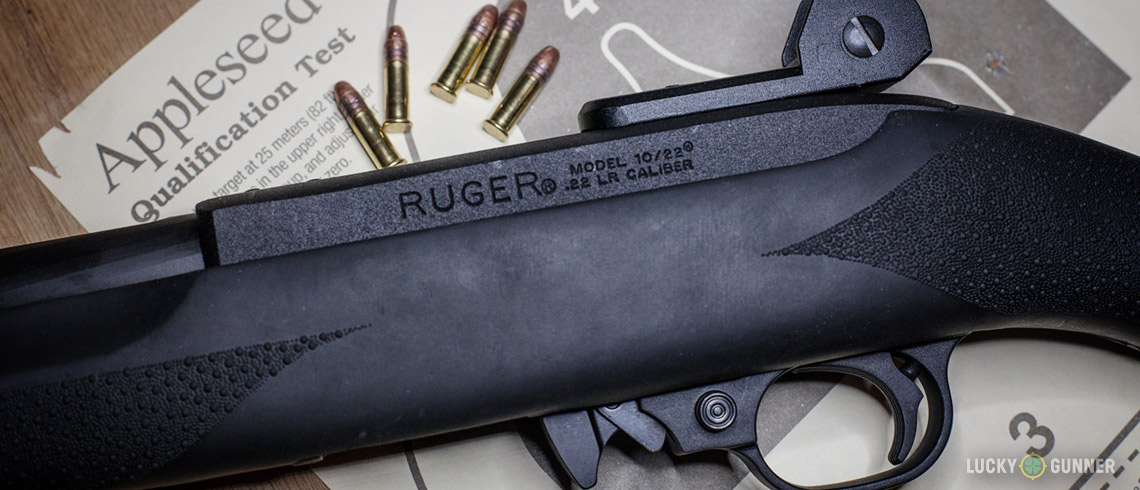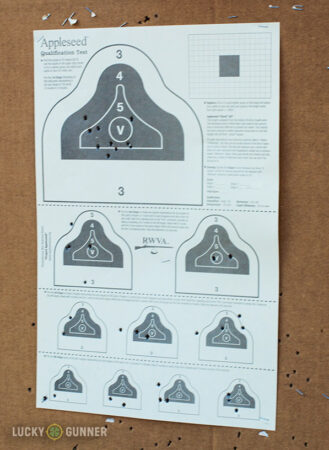Rifle Marksmanship Training with Project Appleseed

Learning Marksmanship from Appleseed
But back to the shooting part. The marksmanship instruction from Project Appleseed is along the lines of what you might see at a High Power match or CMP event. The program revolves around classic American military rifleman standards that go back to the WWI era. Students learn how to shoot from standing, sitting/kneeling, and prone positions using a GI web sling looped around the support arm. At most events, shooters take position at the 25 meter line and shoot .22 LR rifles at scaled-down targets to simulate longer distances. Some Appleseed clinics include the opportunity to shoot at longer ranges with centerfire rifles, but that’s not really necessary in order to learn the skills. Veterans of long distance Appleseed clinics have often said that shooting the full distance is not as difficult as hitting the small targets on the 25 yard line.
Video
Participants brought a wide variety of rifles, but most stuck with something close to the standard that Appleseed has dubbed the “Liberty Training Rifle“. That’s basically a semi-automatic .22 LR rifle with 10-round magazines equipped with sling studs, a GI web sling, and aperture/peep sights. The most common rifles were variants of the Ruger 10/22 and the Marlin 795. I saw a lot of these modified with peep sights from Tech Sights but there were probably an equal number of students using some kind of magnified optic. Either will work for Appleseed, though personally I think an optic with a minimum magnification greater than 4x might actually make things more difficult at 25 meters. Most of the instruction seemed to be weighted more toward the use of peep sights, and unless you have some vision issues, that’s probably the way to go.

The first day of the two-day clinic was spent going over the basics of marksmanship. In addition to the three shooting positions and use of the loop sling, we also covered the “Six Steps to Firing a Shot” which is Appleseed’s way of breaking down the fundamentals of rifle shooting into easily digestible and repeatable steps. There were plenty of opportunities to ask questions, check and re-check rifle zero, and make sure everything was understood before moving forward. In fact, if I have any criticism of the whole weekend it would be that the first half of the first day went by pretty slowly, but that’s to be expected in a large class like the one we had. I would rather things poke along at the beginning than to have class held up later on because the less experienced shooters didn’t catch the basics at the start.
By the end of day one, we moved on to the AQT, which is one of Appleseed’s primary teaching tools. The Appleseed Qualification Target consists of four strings fire, ten shots each with a break in between each string to reload magazines. Each string has a different time limit and is shot from a different position (with the exception of the last two, which are both shot from the prone position). The highest possible score is 250, and any score of 210 or better qualifies the shooter for a Rifleman patch. It’s a score high enough to be a challenge for any shooter, but achievable enough that most Appleseed events will have at least a few Riflemen. This makes the AQT a great tool because it provides the chance for practice and repetition, but also doubles as a skill assessment and gives the shooter a goal to strive for.
